Can you relate?
Why we need more than “partnerships” to change our world
By Traci Price
“Today we are faced with the preeminent fact that, if civilization is to survive, we must cultivate the science of human relationships.” – Franklin D. Roosevelt
 From Collective Impact models to Social Network Analysis, the word “partnership” has taken the main stage in promoting collaboration to solve our increasingly interconnected environmental, social and economic challenges.
From Collective Impact models to Social Network Analysis, the word “partnership” has taken the main stage in promoting collaboration to solve our increasingly interconnected environmental, social and economic challenges.
Yet when Shane Endicott, founder of Our United Village and The ReBuilding Center, provided closing comments at June 18th’s Intertwine Conservation Education Summit, he 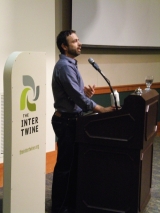 reminded us that “partnerships” alone aren’t going to change our world.
reminded us that “partnerships” alone aren’t going to change our world.
Even within a coalition like The Intertwine Alliance – which exemplifies “partnership” by bringing private, public and nonprofit groups together – we can enter agreements with each other that represent varying goals, degrees of give-and-take, levels of authority and understanding of responsibilities. The word can even be used superficially; take that last-minute grant application where “partners” are solicited to demonstrate an ability to co-labor or align efforts with mission-related organizations.
But given the complex challenges we face today, solutions will require more than memorandums of understanding. If partnerships are truly to change our world, we need to think of them not as strategic alliances, but actual relationships. It is our relationships that make all the difference: kinship, connection, association – a higher level of commitment.
Take a moment to think about your relationships – with family, friends, and colleagues. The ones that work do so not because they are seamless or easy. They work because you've made a commitment to make them work. You may have vested interests, shared values or some inextricable force of nature that keeps you coming back for more.
Consider the task force originally assembled when the No Oregon Child Left Inside Act passed in 2009. Although appointed members were required to serve for just ten months, to this day many continue to play a vital role in promoting and implementing our task force’s product, The Oregon Environmental Literacy Plan. We no longer have a requirement to work together, nor MOUs or letters of commitment. We keep showing up because, I like to think, we care not only about the work but about each other. 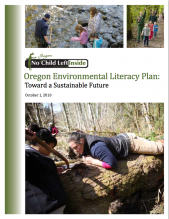
At last week’s Conservation Education Summit, themed “partnership,” more than 90 attendees agreed on another scope of work – specifically, that our coalition needs to:
- strengthen the network of 450+ conservation education providers across The Intertwine;
- decrease competition for funds;
- increase collaboration with a diversity of partners, and
- focus on asset-based approaches to improve life in our communities.
But as we move to address these challenges, layers of complexity will unfold, revealing our varying goals, give-and-take, differing perspectives. To succeed, the most essential ingredient we’ll need will be finding the assets we have to share with our “partners,” and then following through, rain or shine.
Partnerships won’t change our world if all we do is sign an MOU’s dotted line. They will, however, make a difference if we commit to giving of ourselves. Identify your assets. Build relationships. Change the world.
A lasting relationship. LEFT: A young Charlie Hales at a Friends of Trees celebration. RIGHT: The future Mayor of Portland in 2001, planting a European Hornbeam -- the 144,000 tree planted for FoT''s Seed the Future campaign.
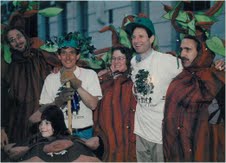
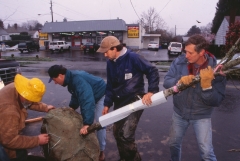

 Traci Price is a seasoned environmental educator, committed to ensuring all people have the opportunity to experience and steward our natural world. Traci spearheaded the
Traci Price is a seasoned environmental educator, committed to ensuring all people have the opportunity to experience and steward our natural world. Traci spearheaded the  s between developers and environmentalists
s between developers and environmentalists
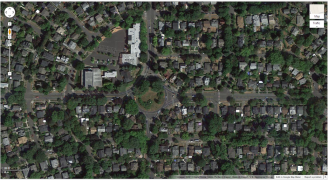
 Todd Prager lives in Lake Oswego and serves on the Lake Oswego Planning Commission. He is an ISA Certified Arborist and a member of the American Institute of Certified Planners. He works with tree codes in Portland and throughout the region with his own consulting firm,
Todd Prager lives in Lake Oswego and serves on the Lake Oswego Planning Commission. He is an ISA Certified Arborist and a member of the American Institute of Certified Planners. He works with tree codes in Portland and throughout the region with his own consulting firm,